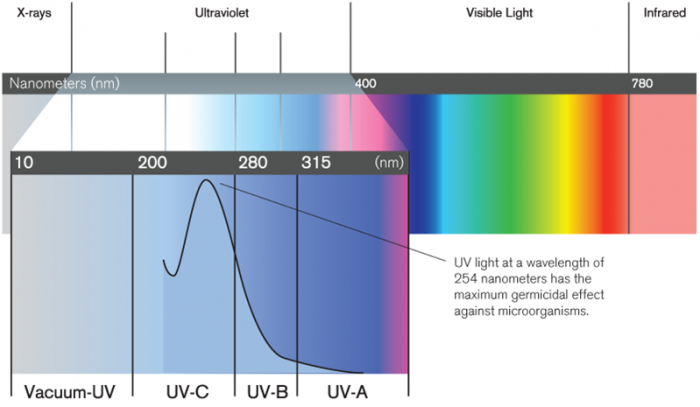
The History of UV
Most people are not aware of the long history of UV in water disinfection and that UV is rapidly gaining popularity as an effective alternative non-chemical water disinfection.
Ultraviolet disinfection of water has a long and well-proven history. UV light has long been accepted as an effective germicidal treatment, and has been installed in many major public drinking water and wastewater treatment plants worldwide.

At the right wavelength, UV has germicidal properties
Although it’s taken a long time for the technology to become widely adopted, UV has been around for a long time. In 1877, the germicidal properties of sunlight were discovered and it was only a matter of time before people tried to apply this knowledge for practical use. In 1903, Niels Fensen received a Nobel Prize for his use of ultraviolet light to combat tuberculosis (although not in water), and in 1910, the first drinking water disinfection system opened in Marseilles, France.
From that time on, the technology changed very little until the 1930s, when the first tubular lamps were developed, allowing for easier applications and different configurations for use. In the 1950s, the first truly significant research of UV disinfection began. By the 1960s, UV disinfection was becoming more widely used in commercial applications and was creeping into the residential market.
Today, ultraviolet disinfection is widely accepted as an effective treatment for the removal of microbiological contaminants from water.
Even highly chlorine-resistant microbes such as Giardia and Cryptosporidium can be effectively disinfected from water with UV. NSF-certified UV systems are becoming an increasingly popular alternative to chemical treatment for many applications.